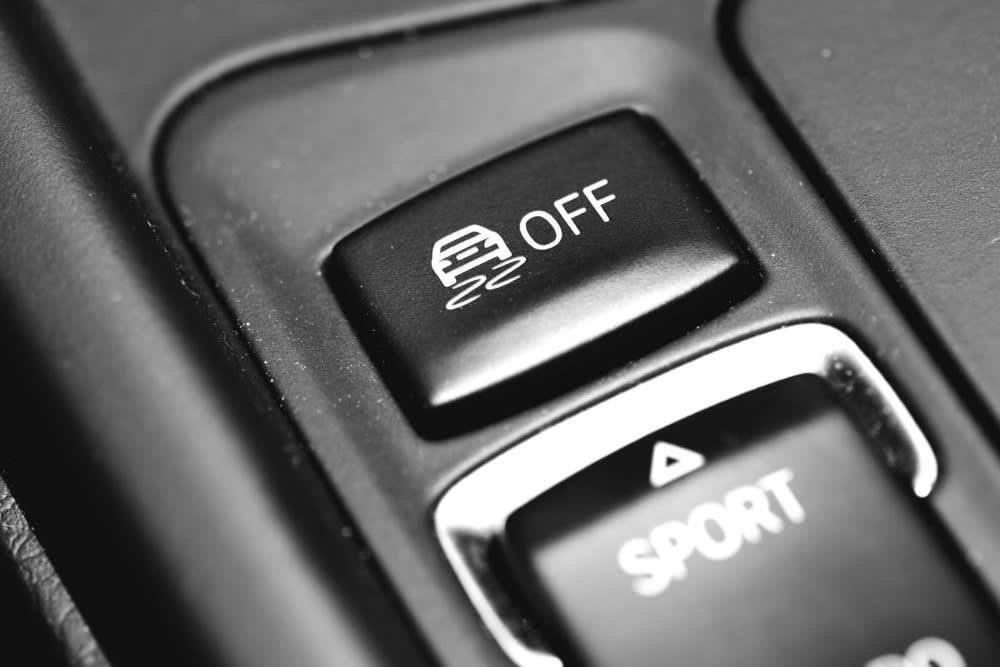

The traction control system (TCS) works to prevent the loss of vehicle control when adverse weather conditions are present, such as snow, ice, or rain. Wheel sensors are used so that the traction control system (TCS) can apply the brakes to specific wheels in order to counteract oversteering and understeering. A reduction of engine speed may also be utilized to assist drivers in maintaining control over the vehicle. The traction control system (TCS) is made up of wheel speed sensors, solenoids, an electric pump, and a high pressure accumulator. The wheel speed sensors monitor the rotational speed of each wheel. The solenoids are used to isolate certain brake circuits. The electric pump and high pressure accumulator applies brake pressure to the wheel(s) that are losing traction. The traction control system (TCS) works with the anti-lock brake (ABS) system and the same control module is often used to monitor and operate these systems. Therefore some symptoms of a faulty traction control system (TCS) and anti-lock brake system (ABS) are often similar or the same.
When the traction control module is not working properly the traction control safety feature will be disabled. It may be more difficult to maintain control of the vehicle during adverse weather conditions. The traction control system (TCS) warning indicator light may be on in the dashboard, and the traction control system (TCS) might remain on all the time or be completely off all together. If the traction control system (TCS) and anti-lock brake system (ABS) share the same module, there may also be problems with the anti-lock brake (ABS) system.
1. Traction Control System Warning Indicator Light is on
When the traction control module is going bad or failing, the most common sign is when the traction control system (TCS) warning indicator light is on in the dashboard. This is an indication that a serious problem exists and should be addressed as soon as possible. See the bottom of this article for a list of generic diagnostic trouble codes that are designated for the traction control module.
2. Traction Control System (TCS) won’t turn off/on
A traction control system (TCS) switch is installed in some cars and gives drivers the ability to turn traction control on and off. This may become necessary in situations where wheel spin and acceleration is required to get unstuck. If the traction control module is going bad or failing, traction control may remain on even when the switch has been turned off. It is also possible that turning the traction control off will not be possible. It is important to note that although this could be a symptom of a failing traction control module, it could also be an indication that the traction control switch is not working properly and needs to be replaced.
3. Loss of Traction Control System (TCS) features
If the traction control module is going bad or failing, it may be more difficult to maintain control of the vehicle when braking during adverse weather conditions, such as ice or rain. The traction control system (TCS) and the anti-lock brake system (ABS) work together to maintain control when hydroplaning. Most of the time a car does not hydroplane for long enough to require the traction control system (TCS) to kick in. However, when the traction control system (TCS) is not working properly, it will not be effective in helping to maintain control of the car during the occurrence of any hydroplaning incident.
4. Loss of Anti-Lock Brake System (ABS) features
If the traction control system (TCS) and the anti-lock brake system (ABS) share the same module it is possible that there will be a loss of anti-lock brake system (ABS) features. The ability to brake safely may be diminished, it may be necessary to apply more pressure to the brake pedal when stopping, and the likelihood of hydroplaning and loss of traction are greater.
The following are the generic diagnostic trouble codes that are designated for the traction control module:
P0856 OBD-II Trouble Code: [Traction Control Input Signal]
P0857 OBD-II Trouble Code: [Traction Control Input Signal Range/Performance]
P0858 OBD-II Trouble Code: [Traction Control Input Signal Low]
P0859 OBD-II Trouble Code: [Traction Control Input Signal High]
P0880 OBD-II Trouble Code: [TCM Power Input Signal]
P0881 OBD-II Trouble Code: [TCM Power Input Signal Range/Performance]
P0882 OBD-II Trouble Code: [TCM Power Input Signal Low]
P0883 OBD-II Trouble Code: [TCM Power Input Signal High]
P0884 OBD-II Trouble Code: [TCM Power Input Signal Intermittent]
P0885 OBD-II Trouble Code: [TCM Power Relay Control Circuit/Open]
P0886 OBD-II Trouble Code: [TCM Power Relay Control Circuit Low]
P0887 OBD-II Trouble Code: [TCM Power Relay Control Circuit High]
P0888 OBD-II Trouble Code: [TCM Power Relay Sense Circuit]
P0889 OBD-II Trouble Code: [TCM Power Relay Sense Circuit Range/Performance]
P0890 OBD-II Trouble Code: [TCM Power Relay Sense Circuit Low]
P0891 OBD-II Trouble Code: [TCM Power Relay Sense Circuit High]
P0892 OBD-II Trouble Code: [TCM Power Relay Sense Circuit Intermittent]



